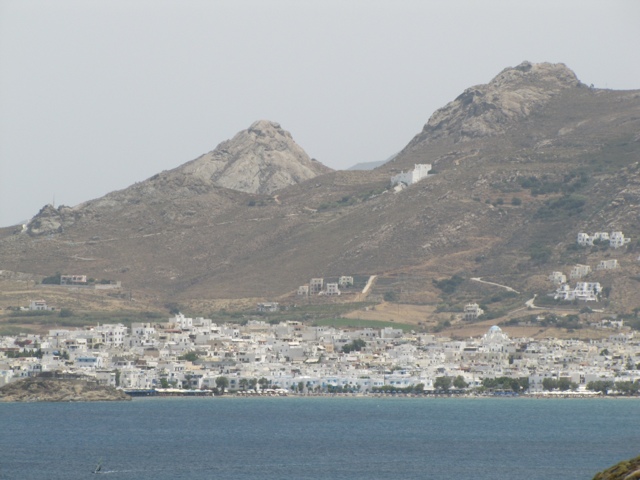THE quad bike is the 50-something's Vespa.
And there's no better way to explore Naxos in the Greek Isles than from the back of one.
Stable, not too powerful, will go all day on a tank of fuel, no reverse to get you into trouble, and it goes up hill and over dale (though I admit I did have to get off a couple of times to allow the up hill bit because of the lack of grunt!).
Naxos - with its hills, dirt roads, tiny alleyways and one-way streets, and 150km of coastline dotted with secluded sandy or rocky beaches and resort towns - is the largest of the Cycladic group of islands at 440sq km and is made for quad biking.
Tony's Bikes Moto Rent, near our family-friendly Hotel Naxos Beach 1 accommodation and associated Flisvos Sport Club on sandy Agios Georgios (St George Beach), had us instructed and rearing to go in no time on two MXR 125cc quaddies (gutless, yes, but my kind of power and budget-friendly, although larger models are available).
First stop on our seven-hour adventure was the the top of a barren hill overlooking Agios Georgios Bay for panorama shots before snorkelling, a swim and a little rock climbing below.
A succession of short and long stops followed at various sandy beaches with crystal-clean turquoise waters to the south - Agios Prokopis, Agios Anna, Plaka and Parthenos - before we settled in for some discounted pita bread platters with cold refreshments at the sister Flisvos Sport Club at Mikri Vigla.
We even had the snorkelling cove nearby all to ourselves ... well, until a small Greek group of friends arrived 20 minutes later.
Using main roads and dirt tracks, we ventured inland as far as Tripodes and saw how the real Greek Islanders live, as well as tiny but pristine white churches with blue domes, old forts, farmland, and even an abandoned windmill or two or three.
We called it a day after heading back to Chora, the main town, and a quick pass by the iconic Temple of Apollo (known as Portara and Palatia).
The photo-frame like temple door - only a short walk from the port - has become the symbol of Naxos.
The tyrant Lygdamis, who ruled Naxos from 545 to 524 BC, started the project but it was unfinished at the end of his reign and never completed.
All that remains today are the platform of the temple, some columns and the north-west portal made from three massive blocks of Naxian marble.
Naxos has so many more beautiful beaches, historic landmarks and ruins such as the Temple of Dimitra, and is world-famous as a windsurfing haven (especially in the lagoon and St George Bay).
But three nights was never going to be enough and time was not on our side.
We preferred to pass most of our leisure hours at Flisvos Sport Club, on a comfortable lounge under the pergola or on a lounge bed under an umbrella - swimming, drinking, eating, people watching, wake boarding and watching the sun set late in the evening.
A late-night inexpensive, tasty authentic Greek meal with a homemade cinnamon and nutmeg-flavoured ouzo chaser on the sand under candlelight by the water's edge at nearby Yialos Taverna doesn't go astray, either.
Such is life in Naxos.



















































